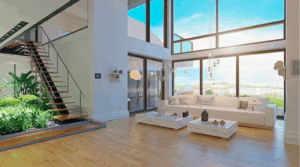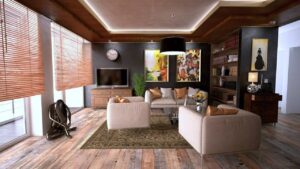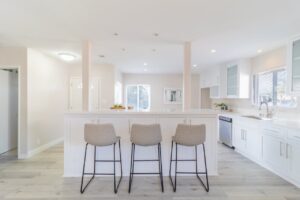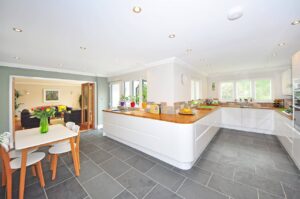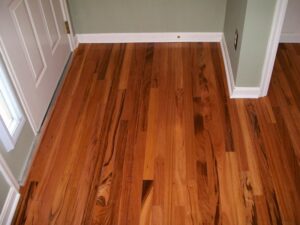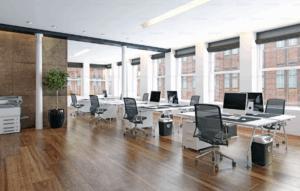Living in Dubai means adapting your home to both luxury and logic. With powerful AC systems running almost year-round, every design element, including your floors, needs to complement this lifestyle.
If you’re choosing the best flooring for modern homes, you’re not just thinking about style. You’re also weighing how well your flooring works with indoor climate control, airflow, and energy efficiency.
Whether you’re designing from scratch or upgrading a villa, this guide will help you understand which flooring types best suit homes equipped with AC systems in the UAE climate.
Understanding the Role of Flooring in Climate-Controlled Homes
In Dubai, where air conditioning runs most of the year, flooring does more than complete a room’s look. It can affect how cool or warm your space feels. The wrong material can make your AC work harder than it needs to.
Some floors, like tile or stone, stay naturally cool and help maintain a steady temperature indoors. Others, like carpet or certain types of wood, can hold onto heat or react to humidity. This matters when you’re trying to keep your home consistently comfortable.
Flooring that expands, traps moisture, or overheats can lead to long-term issues. For homes with central or split AC systems, choosing stable, low-maintenance materials helps with both comfort and energy efficiency. It’s a detail that often gets overlooked but makes a real difference.
Why Material Matters in Dubai?
Dubai’s extreme outdoor heat and strong indoor cooling create constant shifts in temperature. This back-and-forth puts stress on flooring, especially in entryways, hallways, and rooms with large windows. Materials that are too sensitive can expand, shrink, or crack over time.
Solid wood, for example, may warp or cup in response to dry air followed by humidity from AC use. On the other hand, engineered wood, SPC, or LVT are more stable and better suited for climate-controlled interiors. These materials hold their shape and stay consistent in look and feel.
Flooring also affects comfort. Some materials feel cold or clammy underfoot when AC is running nonstop, while others retain a neutral, balanced temperature. Choosing a floor that works with your cooling system can help maintain both comfort and durability in the long run.
Best Choices for AC-Optimized Flooring
In homes where air conditioning runs almost year-round, flooring needs to do more than just look good. It should hold up against constant cooling, resist moisture, and stay comfortable underfoot. These materials work especially well in Dubai’s climate-controlled interiors.
Engineered Wood
Engineered wood gives the look and feel of real timber but is far better suited to modern cooling systems. Its layered structure prevents warping and shrinking, which is common with solid wood in dry, air-conditioned spaces. It also responds more gradually to temperature changes, helping maintain a stable fit and finish.
The top hardwood layer offers warmth and character, while the inner core keeps it structurally sound. This makes engineered wood a strong choice for bedrooms, living areas, and even entryways where temperature shifts are more noticeable.
Porcelain Tiles
Porcelain tile is one of the most climate-tolerant flooring options available. It stays cool underfoot even on the hottest days, making it a natural fit for homes with powerful AC or underfloor cooling. Because it’s dense and non-porous, it resists moisture and staining with little effort.
It also suits a wide range of design styles, from clean and modern to more classic looks, and requires minimal maintenance over time. This balance of performance and style makes it especially popular in kitchens, bathrooms, and high-traffic areas.
Luxury Vinyl Flooring (LVF)
Luxury vinyl flooring in Dubai offers the appearance of natural wood or stone without the same sensitivity to temperature and humidity. It is softer underfoot than tile, quiet under movement, and highly resistant to water, making it a practical choice for AC-heavy homes.
LVF holds its shape well, even with regular shifts in temperature from day to night. It’s a strong option for families looking for comfort, durability, and a wide variety of design choices that work in every part of the home, from living rooms to basements.
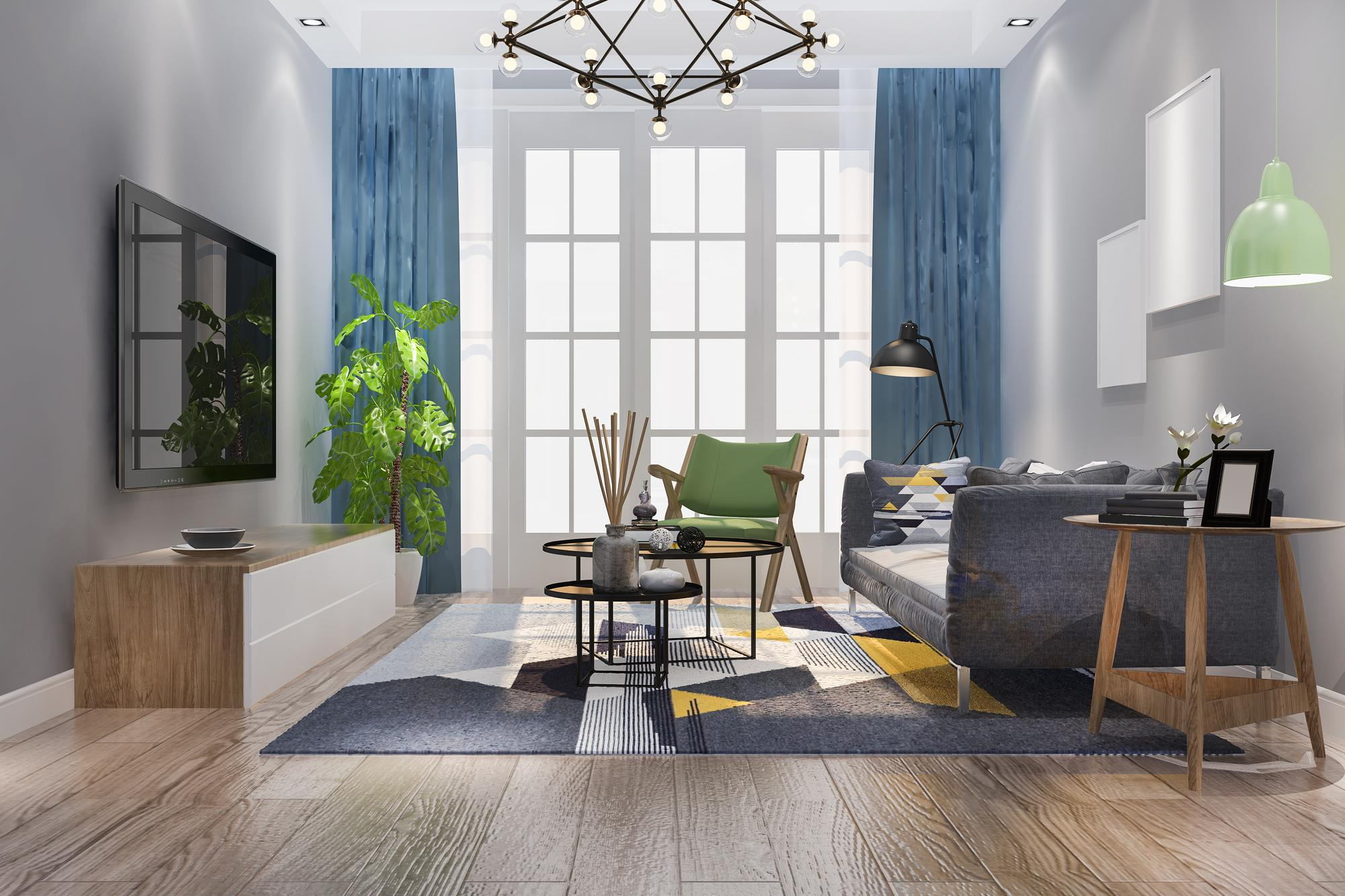
What About Hardwood Flooring for Modern Homes?
Hardwood flooring brings natural beauty and character, but in AC-controlled environments like those in Dubai, it comes with some challenges. Wood flooring expands and contracts with changes in temperature and humidity, which can lead to gaps, cupping, or surface cracks over time.
If you do choose solid hardwood, professional installation is essential. Installers must account for the home’s cooling system, subfloor conditions, and airflow to minimize future movement. Choosing species known for dimensional stability and using the right sealants can also help protect the surface.
Hardwood looks timeless, but it requires consistent care. Homes with central or split AC should be monitored for moisture balance, and floors may need occasional refinishing to stay in good shape. For homeowners willing to manage those needs, hardwood can still be a great fit.
How Flooring Supports Modern Interiors?
Flooring in modern homes sets the tone for the entire aesthetic. Clean lines, neutral palettes, and seamless transitions between rooms are key themes in contemporary design. Your choice of flooring can enhance this flow or interrupt it. Keep in mind that there are different types of flooring, so choose according to your home’s needs.
Continuous materials like large-format tiles or wide-plank vinyl create an open, unified look. They also pair well with natural light and architectural cooling, especially in open-plan layouts.
Installation and Maintenance in Dubai
No matter how premium the material, installation quality matters. In a region where climate control is a lifestyle feature, professional installation ensures your flooring adapts and lasts. Improper subfloor preparation or adhesive choices can lead to warping, bubbling, or cracking over time.
Routine maintenance is also simpler when the flooring complements your AC setup. Materials like vinyl and porcelain need only sweeping and occasional mopping. Wood-based options may require additional care, such as humidity monitoring or refinishing.
Sustainability and Indoor Air Quality
In today’s health-conscious world, indoor air quality is a growing concern, especially for modern homeowners living in tightly sealed, air-conditioned environments like those commonly found in Dubai and other urban areas. The materials used in your home’s construction and interior finishes, particularly flooring, play a major role in maintaining clean, breathable air.
Understanding VOC Emissions in Flooring
Many conventional flooring materials, especially lower-cost options, can release volatile organic compounds (VOCs) into the air. These gases are often emitted from synthetic adhesives, finishes, and composite materials, and may continue off-gassing long after installation.
Over time, VOCs can circulate through your HVAC system, contributing to poor indoor air quality and potential respiratory issues, headaches, or allergic reactions.
The risk is even greater in well-insulated, air-tight homes where natural ventilation is limited and reliance on artificial cooling is high. In such environments, pollutant concentrations can accumulate, making air quality management critical.
Choosing Low-Emission, Sustainable Materials
To protect both your health and the environment, opt for flooring materials certified for low or zero VOC emissions. Look for certifications such as GREENGUARD Gold, FloorScore, or E1/E0 European formaldehyde standards, which ensure the product meets strict chemical emissions limits.
Also, consider flooring options made from natural or recycled materials, such as sustainably harvested wood, bamboo, cork, or luxury vinyl tile (LVT) that uses eco-friendly resins and coatings. These materials offer durability and design flexibility without compromising air quality.
Conclusion
Choosing the best flooring for modern homes in Dubai is about striking a balance between aesthetic, performance, and adaptability. AC systems are a permanent fixture in this climate, and your floors should support that investment, not undermine it.
Whether you’re drawn to hardwood flooring for modern homes, sleek porcelain, or practical vinyl, each offers a unique benefit when matched correctly with Dubai’s cooling demands.
Book a consultation with Floor Guys in Dubai to explore your options and enjoy a flawless installation tailored to your home’s needs. Visit floor-guys.com to learn more or call us directly at +971585498158 to schedule a site visit. We are located at The Apricot Tower, Office Number 802-4, Silicon Oasis Dubai.

